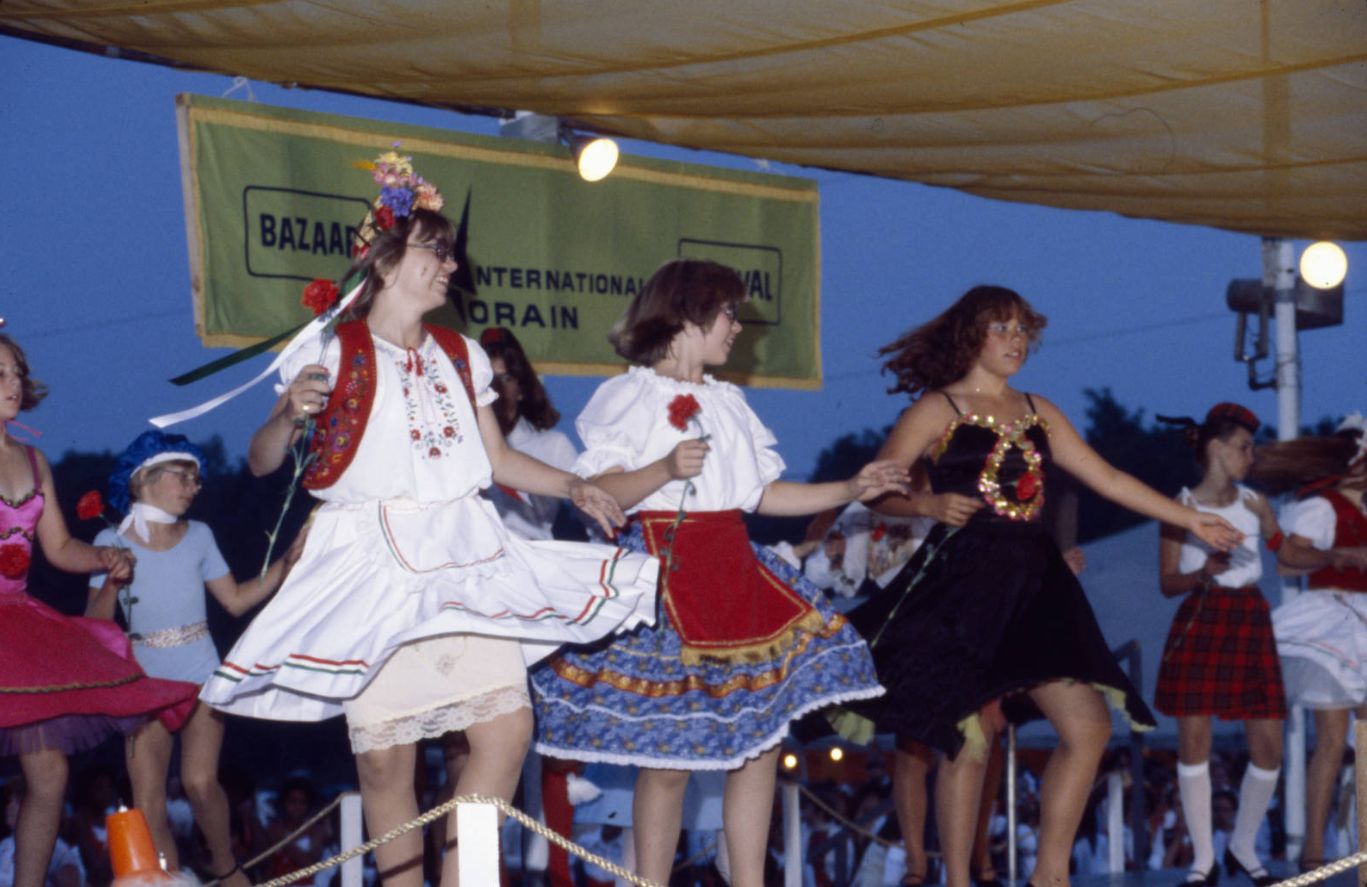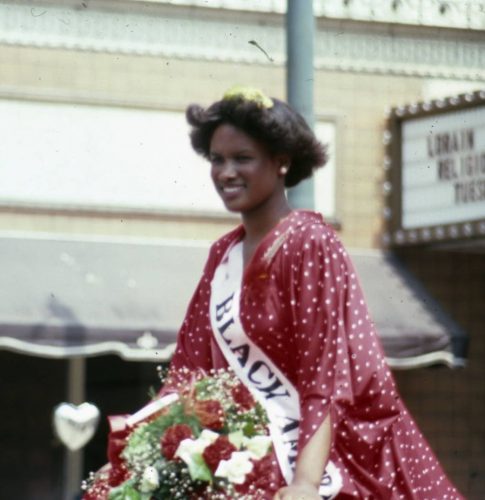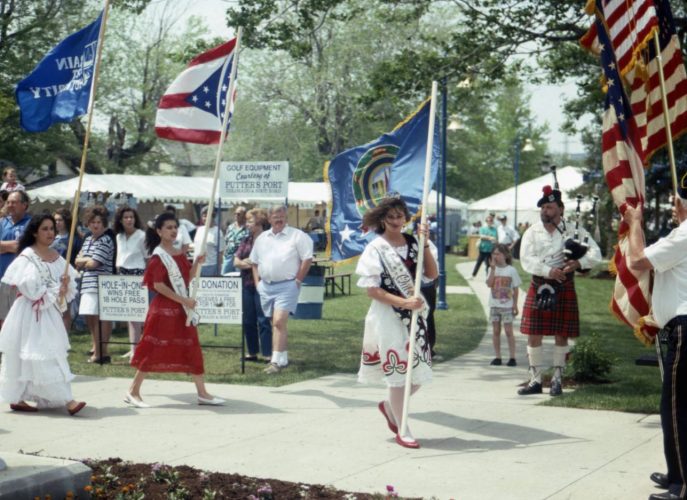Celebrating the “International City”: The Lorain International Festival

If you really want to understand Lorain, you must attend the Lorain International Festival. Not only does the festival mark the symbolic start of summer for the community, it is a true celebration of diversity through food, music, and dancing. The John Milas collection, at a glance, documents a fun community festival. However, to appreciate the significance of the festival, you must know a little bit about its origin.

In 1966, the new editor of the Lorain Journal, Irving Leibowitz, was looking for something to unify Lorainites during a turbulent time in the nation’s history. Considering the headlines of the day—namely the Vietnam War and the mass racial violence against African Americans—Liebowitz looked internally for something positive in Lorain to bring the community together. Prior to the Lorain International Festival, nearly every church in the city had a festival; nearly every week of the year you could find a church festival or bazaar. That’s when Liebowitz came up with the idea for the Lorain International Festival and bringing all the nationalities together to share their cultures. The first festival was held in 1967.
Knowing the inspiration behind the festival elevates it in the context of Lorain and Ohio’s history; it is especially important for new generations to understand the impact and pride Lorain has in this festival.
Planning for the festival took off like wildfire. Approximately 70,000 people attended the first festival in 1967. By the mid-1970s, the festival was attracting up to 120,000 people from across northern Ohio. Renowned locals, state governors, and foreign diplomats were typically picked to give speeches at the annual International Breakfast.

Each year, a Princess Pageant is held where young women from Lorain County compete to represent their heritage and become International Queen earning scholarships towards their education. The Queen and her Court reign for one year, visiting festivals and attending other special events across the state of Ohio, representing the International City of Lorain. The sponsorships of the princesses by organizations from local communities have brought a rich pride in community heritage that is unique to Lorain.
At the turn of the 20th century, many new nationalities first came to Lorain to work for the steel industry. Today, with the decline of Lorain’s industries, there are still strong ethnic communities within the city, but in much smaller capacities. Understanding the changes Lorain has gone through will be important going forward as Lorain seeks to redefine itself beyond steel. Gauging the current enthusiasm for the festival today, even as ethnic churches and clubs have closed, Lorain is still very much the International City.
The motivation for sharing this photographic collection is to shed light on the history of Lorain’s International Festival in a way that will demonstrate that the meaning of the festival goes beyond just good food and dance. The overlying intention is to spread a message of inclusion and warmth in Ohio and its International City.
The Lorain Historical Society announced that the John Milas collection was available through Ohio Memory over the weekend of the June 2019 International Festival to great effect. The social media and Ohio Memory analytics were very exciting and encouraging for the goals for the project. We were touched by the number of Lorainites who came up to the Lorain Historical Society booth at the festival to talk about the images of themselves or their families that they found and to overall express their excitement for having access to the collection.
Thank you to Kaitlyn Donaldson, Curator at the Lorain Historical Society, for this week’s post! Learn more and explore the full John Milas Lorain International Festival collection on Ohio Memory.



Leave a Reply
You must be logged in to post a comment.